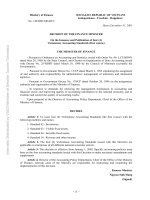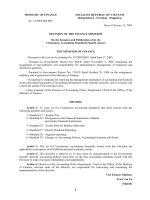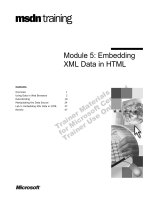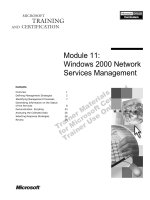Tài liệu Overview of the XML web Services intracstructure pptx
Bạn đang xem bản rút gọn của tài liệu. Xem và tải ngay bản đầy đủ của tài liệu tại đây (30.89 KB, 2 trang )
Overview of the XML Web Services Infrastructure
The infrastructure of Web Services has four main areas:
•
XML Web Services Directories. Central location to locate XML Web Services
that outside organizations create. The UDDI registry is an example of one of these
directories. Your Web Service client might not even need to use these if you know
the address of the Web Service you are accessing.
•
XML Web Service Discovery. Discovering documents that describe a particular
XML Web Service using the Web Services Description Language (WSDL). The
DISCO specification defines an algorithm for locating service descriptions. Again,
if you know the location of the service description, you can avoid this process.
•
XML Web Service Description. Defines what types of methods the XML Web
Service uses. Tells clients how to interact with an XML Web Service so that they
know how to use it.
•
XML Web Service Wire Formats. To be able to communicate with all platforms
and languages, XML Web Services use open wire formats. These are protocols
that any system that is capable of supporting the most common Web standards can
understand. SOAP is the main protocol used.
Figure 13.2. Don't panic-these steps are performed for you in some cases after you
set up the Web reference.
You can find all of the examples in this chapter in the Solution called Visual Basic .NET-
Chapter 13 on the Web site.
Note
You will find the Web Service solution in a separate location called
SecurityWebServices on the Web site. The Chapter 13 solution will
contain the sample forms that are created to call methods from the Web
Service.









